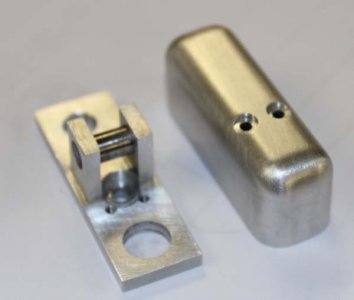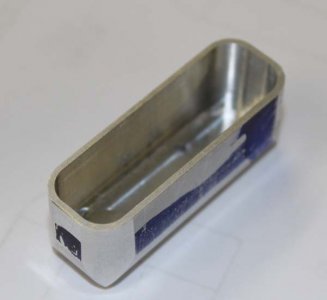- Joined
- May 19, 2014
- Messages
- 70
I need to mill a 4" x 3"x 1" pocket in a piece of aluminum stock. What is the best process and end mill type?
The mill is G0704 and is manual. Is there any advantage to using a ballnose vs. square endmill or some type of indexable mill?
I have a G0759, which is just a G704 with readouts. I had a project where I cut a dozen 2X2 X1.5 pockets in cast iron. It really helped to remove most of the surplus metal with a drill. It is a lot easier and cheaper to sharpen a drill than replace that nice end mill.


Good topic. I had to mill some cavity pockets in these little aluminum rocker covers (my IC radial engine build). The fine tooth rougher EM & vacuum chips trick worked well. I set up hard stops in the X-direction & just had to monitor the Y-direction. I think I left about 5 thou finishing for final dimension around the inside perimeter. This pic doesn't show the issue but when I got to the corners , the EM got a just a little bit grabby & seemed to cut 'a bit more' even though the DRO said that was the end point. I can see an ever so slight transition line at the end point. I remember locking the table in the first direction before going to the next (90-deg) direction hoping to eliminate any drift. Is there a trick to this finishing stage? Maybe no climb milling allowed? I haven't tried those high helix spiral EM's yet, maybe that will help? I seem to recall I had a similar issue with mild steel.
